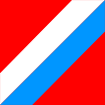Sydney Super Dome
Coordinates: 33°51′S 151°04′E / 33.850°S 151.067°E
|
| |
|
Exterior view of venue from the Olympic Bvd (c.2016) | |
| Former names |
Sydney SuperDome (1999-2006) Acer Arena (2006-11) Allphones Arena (2011-16) |
|---|---|
| Address |
Olympic Bvd and Edwin Flack Ave Sydney NSW 2127 Australia |
| Location | Sydney Olympic Park |
| Owner | TEG Live |
| Operator | AEG Ogden |
| Capacity |
21,302 18,200 (seating capacity) |
| Construction | |
| Broke ground | September 1997 |
| Opened | 4 October 1999 |
| Construction cost |
A$200 million ($288 million in 2016 dollars[1]) |
| Architect | Philip Cox and Devine deFlon Yaeger |
| Structural engineer | Taylor Thomson Whitting |
| Services engineer | Norman Disney & Young |
| General contractor | Obayashi Corporation |
| Main contractors | Abigroup Ltd |
| Tenants | |
|
Sydney Kings (NBL) (1999-2002, 2016-present) Sydney Swifts (CBT) (2001-08) NSW Swifts ANZ Championship) (2008-16) NSW Swifts (SSN) (2017-) | |
| Website | |
| Venue Website | |
The Qudos Bank Arena (originally known as the Sydney SuperDome) is a large multipurpose arena located in Sydney, Australia. It is situated in Sydney Olympic Park, and was completed in 1999 as part of the facilities for the 2000 Summer Olympics. The A$190‑million facility was designed by COX Architecture and Devine deFlon Yaeger; and constructed by Abigroup Ltd and Obayashi Corporation with environmental factors in mind;[2] however, the air-conditioner unit for the facility used HCFCs and was said to be a breach of the Green Guidelines for the Olympics. Bob Carr, premier of New South Wales, officially opened the stadium in November 1999.[2]
The development of the stadium was part of three subsites which also included a 3,400-space carpark which cost A$25 million,[2] and a plaza with external works, also costing $25 million.[2] The roof's masts reach 42 metres (138 ft) above ground level, and the stadium occupies a site of 20,000 m2 (220,000 sq ft; 4.9 acres).[2]
The arena is ranked in the top 10 arenas worldwide.[2] For three consecutive years the venue has been a finalist for the Billboard Touring Awards in the top venue category.[3]
The arena has a total capacity of 21,032 with a seating capacity of around 18,200 making the Super Dome the largest permanent indoor sports and entertainment venue in Australia.
Stadium name history
The arena was known as the Sydney SuperDome from opening in 1999 until 11 May 2006 when it was renamed Acer Arena as part of a naming rights deal.[4][5] The naming rights were subsequently purchased by Allphones, the new name Allphones Arena taking effect from 1 September 2011.[6] From 11 April 2016 the venue was known as Qudos Bank Arena (Qudos Bank, formerly Qantas Credit Union).[7]
Design

The Sydney Super Dome is designed at an average capacity of 18,200 seated, with a maximum possible capacity of 21,032, according to the Sydney Olympic Park Authority.[8] The Super Dome originally opened with a capacity of 13,000 to 15,000,[9] before being upgraded to 18,000 for the 2000 Summer Olympics.[10] The arena's bowl is rearrangeable in various modes to accommodate for sports events, concerts, and the alike. The floor of the venue measures 48 m (157 ft) by 78 m (256 ft) at its maximum extent.[11] The venue is created from 5,696m3 of concrete, 1,884 tonnes of reinforcing steel, and is topped with a 1,235 tonne roof structure.[8] 18 steel masts suspend from the zinc and aluminium-composed and alloy-coated steel roof, which is tensioned by cables stretching from the top of each mast to the center of the roof.[11] The interior ceiling of the venue is decorated in a corrugated steel profile, heavily insulated with materials such as numerous copies of unused Yellow pages telephone directories.[8][11]
Various measures were made at the request of the Sydney Organising Committee for the Olympic Games (SOCOG) for environmentally friendly design measures. In its early years, the Sydney Super Dome used renewable energy for a fraction of its power supply, provided by EnergyAustralia's green power scheme. The venue saw use of green power through a deal with EnergyAustralia that lasted the duration of the 2000 Summer Olympics and the five years following.[12] The Super Dome's power architecture includes 1,176 photovoltaic solar panels, installed on the arena's roof, which provide 10% of the venue's daily energy consumption, estimated at ~8612MWh annually. Energy efficient lighting and heating/cooling systems were also installed in the venue.[12] The roof's drainage system consists over 2000m of high-density polyethylene pipes, in addition to nearly 3000m of cast iron and copper pipes used in the venue's plumbing system, and 1000m of vitrified clay pipes that make up the Super Dome's surrounding stormwater drainage system.[12] The Super Dome was also one of many venues built at Sydney Olympic Park that made use of recycled timber, used to construct the exterior balconies of the venue. The timber was sourced from Kempsey, and Oberon, along with local sources in Sydney.[12] Additionally, polypropylene seats with nylon arms and mountings make up the Super Dome's stands.[12]
Events
The arena is home to many major entertainment and conference events and is a venue of choice for major entertainment promoters.
See also: Entertainment events at Sydney Super Dome
Regular/annual events
- Hillsong Conference (2001–2010, 2012–present)[13]
- ARIA Music Awards (2003–2009,[14] 2011[15])
Notable occasional events
On 11 December 1999, a league record 17,803 spectators attended a NBL match between the Sydney Kings and West Sydney Razorbacks. As of November 2016 this remains the largest attendance for any basketball game played in Australia.[16]
During the 2000 Games, the venue hosted the men's and women's basketball finals, and the artistic and trampoline gymnastics events.[17] In the men's basketball, the Bronze medal playoff won by Lithuania 89-71 over host nation Australia, and the Gold Medal playoff, won by the United States 85-75 over France, drew 14,833 fans to the arena. The permanent seating capacity of the Super Dome was reduced to approximately 15,500 during the Olympics due to the usual large number of seats allocated for the media.[18]
In 2001 the SuperDome was the host of the ATP World Tour Finals Tennis Masters Cup won by Australian World number one men's tennis player Lleyton Hewitt, defeating Frenchman Sébastien Grosjean in the Final 6-3, 6-3, 6-4.[19]
On 13 November 2004, the SuperDome attracted the record attendance for a netball game in Australia when 14,339 turned out to see the Australian Netball Diamonds defeat the New Zealand Silver Ferns 54-49.[20]
On 28 July 2008, an ANZ Championship record 12,999 fans saw the New South Wales Swifts defeat the Waikato Bay of Plenty Magic 65-56 in the ANZ Championship Grand Final at the Acer Arena.[21]
On 3 July 2009, Chinese pop singer Jay Chou came to Sydney to perform a one off concert. It managed to become the number one box office record holder for Allphones Arena, and has stayed in this position ever since. In that concert he broke 11 records in Australia including largest audience (15,200), highest total sponsored amount and highest production cost ($480 000). The box office reached an astronomical amount of $2.6 million USD out-grossing Beyoncé and The Eagles placing him at rank 2 worldwide.[22]
On 17 November 2014, Narendra Modi, Prime Minister of India, addressed Indians residing in Australia.[23]
Matches of the 2015 Netball World Cup were held at Allphones Arena, and the world record for a netball match was broken three times. Day 3 of the World Cup attracted 16,233 spectators. Day 9 attracted 16,244 while the Final held on 16 August 2015 attracted a netball world record attendance of 16,752 to see Australia defeat New Zealand 58–55 to win their third straight INF Netball World Cup and their 11th overall.[24]
In November–December 2014, American singer-songwriter Katy Perry performed at the arena as part of the The Prismatic World Tour, breaking the Allphones Arena ticket record with 89,500 patrons over six shows.[25]
In March 2016, the live DVD of the Rebel Heart Tour by Madonna, was recorded at the arena, she performed 2 concerts for an audience of 26.370 spectators and grossing $6 million USD.[26]
Gallery

See also
References
- ↑ Australian Consumer Price Inflation figures follow the Long Term Linked Series provided in Australian Bureau of Statistics (2011) 6461.0 – Consumer Price Index: Concepts, Sources and Methods, 2011 as explained at §§3.10–3.11; this series comprises "from 1901 to 1914, the A Series Retail Price Index; from 1914 to 1946–47, the C Series Retail Price Index; from 1946-47 to 1948-49, a combination of the C Series Index, excluding rent, and the housing group of the CPI; and from 1948–49 onwards, the CPI." (3.10). Retrieved May 4, 2015
- 1 2 3 4 5 6 "Acer Arena - History". Retrieved 2011-04-04.
- ↑ http://www.themusicnetwork.com/music-news/live/2011/11/10/australia-nominated-twice-in-touring-awards/
- ↑ "Sydney SuperDome to become Acer Arena". Sydney Olympic Park Authority. 28 March 2007. Retrieved 28 April 2007.
- ↑ "Sydney SuperDome is now Acer Arena!". 22 March 2006. Retrieved 9 February 2010.
- ↑ "New naming rights sponsor for Allphones Arena". Sydney Olympic Park Authority. 24 August 2011. Retrieved 2 September 2011.
- ↑ "ALLPHONES ARENA NAME CHANGE TO: QUDOS BANK ARENA".
- 1 2 3 "Fact Sheet — Venues" (PDF). Sydney Olympic Park Authority. Government of New South Wales. January 2015. Retrieved 2 June 2016.
- ↑ AdNews staff (25 August 2000). "A broad marketing mix sells the arts to allcomers". Advertising News. Yaffa Media. Retrieved 2 June 2016.
- ↑ BBC News staff (3 January 2000). "Venues for Olympic dreams". BBC News. British Broadcasting Corporation. Retrieved 2 June 2016.
- 1 2 3 "Superdome Case Study" (PDF). BHP Steel. 17 November 2003. Retrieved 2 June 2016.
- 1 2 3 4 5 Palese, Blair; Millais, Corin; Posner, Rupert; Koza, Fiona; Mealey, Elisabeth; McLaren, Warren; Luscombe, Darryl; Ruchel, Matt; Oakwood, Mark; Dam, Tanja; Wuelser, Gabriella; Landman, Sybrand; Stewart, Danielle; Shepherd, Jo; Apps, Linda (September 2000). "How green the Games? - Greenpeace's Environmental Assessment of the Sydney 2000 Olympics" (PDF). Inov8. Greenpeace Australia Pacific. Archived from the original (PDF) on 2 June 2016. Retrieved 2 June 2016.
- ↑ "Hillsong Conference".
- ↑ "Aria Awards".
- ↑ "Allphones Arena Hosts 2011 ARIA Awards". Australasian Leisure Management. 27 November 2011. Retrieved 15 December 2011.
- ↑ "Attendance Records". austadiums.com. Retrieved 23 November 2014.
- ↑ 2000 Summer Olympics official report. Volume 1. p. 390.
- ↑ Norwood, Robyn (1 October 2000). "U.S. Is Lucky to Escape Alive". latimes.com. Retrieved 23 November 2014.
- ↑ Harman, Neil (18 November 2001). "Hewitt bandwagon surges on". telegraph.co.uk. Retrieved 23 November 2014.
- ↑ "A TRUE trans-Tasman GF for netball`s inaugural season". nswswifts.com.au. Retrieved 23 November 2014.
- ↑ 2008 ANZ Netball Grand Final at Austadiums
- ↑ "Jay Chou - Allphones Arena : Concert Halls and Sport Stadiums and Live Entertainment and Functions in Homebush Bay, Sydney".
- ↑ Wade, Matt (17 November 2014). "Indian Prime Minister Narendra Modi draws thousands to Sydney Olympic Park". smh.com.au. Retrieved 23 November 2014.
- ↑ Allphones Arena Crowds at Austadiums
- ↑ "Katy Perry's Australia Tour Sells 350,000 Tickets, Could Have 'Easily' Added a Dozen Shows". Billboard. Prometheus Global Media. December 19, 2015.
- ↑ "Madonna Rebel Heart Tour in Australia". March 20, 2015.
External links
| Wikimedia Commons has media related to Sydney Super Dome. |
- Official website
- Sydney Super Dome at Austadiums
| Events and tenants | ||
|---|---|---|
| Preceded by Pavilhão Atlântico Lisbon |
ATP World Tour Finals Venue 2001 |
Succeeded by New International Expo Center Shanghai |


_pictogram.svg.png)